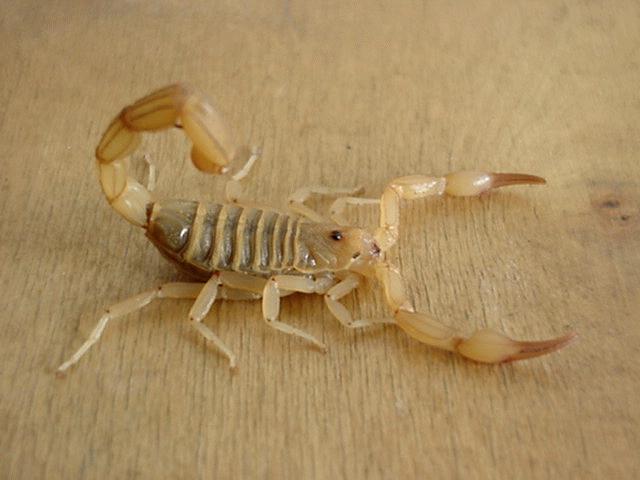Heteroctenus garridoi
(Armas, 1974)
|
|

|
|
Common names:
Distribution:
Carribean (Endemic from coastal desert areas in extreme
southeastern Cuba).
Habitat:
This species lives mainly under stones and inside dead
agave (Agavaceae: Agave sp.), occassionally
found also under barks and inside houses.
Venom:
No medical data available. From Dr. Teruel's
experience: mild venom, sharp painful sting with
aftereffects lasting for 1-5 hrs. This species is much
more irritable and prone to sting than H. junceus,
but its sting is much less
Selected litterature:
Armas, L. F. (1974). Escorpiones del
Archipiélago Cubano. 5. Nuevas especies de Rhopalurus
(Scorpionida: Buthidae). Poeyana, 136, pp. 1-12.
Esposito LA, Yamaguti HY, Souza CA, Pinto da Rocha R, Prendini L. Systematic revision of the neotropical club-tailed scorpions, Physoctonus, Rhopalurus, and Troglorhopalurus, revalidation of Heteroctenus, and descriptions of two new genera and three new species (Buthidae: Rhopalurusinae). Bulletin of the American Museum of Natural History. 2017(415):1-134.
De Armas LF. Revalidation of Three Recently Synonymized Cuban Species of Heteroctenus Pocock, 1893 (Scorpiones: Buthidae: Centruroidinae). Euscorpius. 2017(248):1-3.
On the Internet:
General:
Adult size: males 45-70mm, females 65-75mm. Color: entire
body pale yellowish brown to light orange, with reddish
pedipalp fingers and all ventral keels of the metasoma
outlined with black. As in the case of H. junceus,
it produces a clearly audible stridulating sound by
swiftly rubbing the pectines with the sternite III.
Females give birth only one time after each mating;
gestation period 25-100 days. Lifespan in captivity: 3-4
yrs from birth to natural death.
In captivity, it can be kept perfectly under desert
conditions, substratum can be either fine, loose soil or
sand, with planty of stones to hide under; moist once or
twice a week and provide drinking water once or twice per
month. If food is available, this scorpion does not
display cannibalistic behavior (as opposite for H.
junceus, which is always a cannibalistic species).
This species file is written by Dr.
Roleando Teruel.
Heteroctenuss garridoi photo by Dr. Rolando Teruel
(C)
|